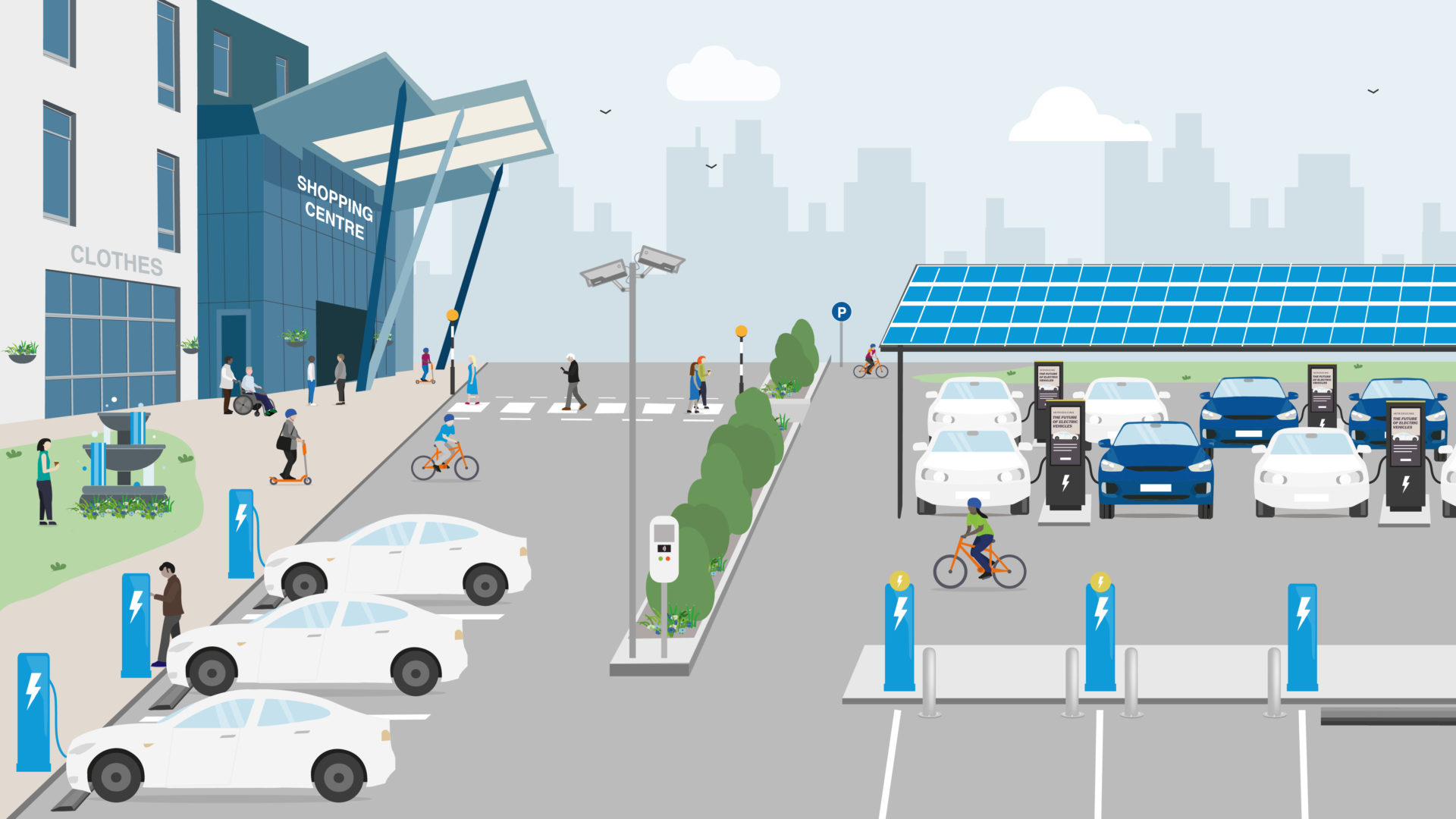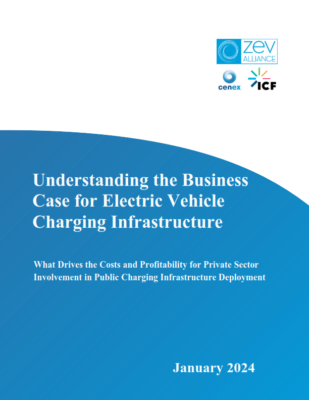

Understanding the Business Case for Electric Vehicle Infrastructure Report
Resource
Summary
On behalf of the ZEV Alliance, this comprehensive report reviewed and evaluated leading international approaches and policies that foster private sector involvement and maximise the benefits public funds can provide to public infrastructure deployment. Four markets — Canada, China, India, and the Netherlands — were selected to further survey charging infrastructure expenditure, revenue, and market sensitivity.
In addition to evaluating the policies and market conditions currently in place in these four countries, the report presents analysis using the Charging Infrastructure Business Case Assessment Tool on the costs, revenue, and payback period of public high-power charging in each market. The report found that a positive charging business case is most plausible in markets with higher EV maturity such as the Netherlands, China, and Canada, and is still feasible for India, especially with assistance from public funding and supportive regulatory environment.
Key Points
Eighteen case study scenarios spanning all four markets were examined and intercompared to understand how varying market characteristics, charger utilisation, and inclusion of photovoltaics (PV) and battery electric storage systems (BESS) may impact the medium- and heavy-duty (MDHD) charging business case. Chief strengths for each market are presented below:
Canada: The Canadian federal and provincial governments have established a series of initiatives and regulations in both the transportation and energy sectors to promote a smooth ZEV transition. In addition, similar MDHD EV policies and programs are also emerging in the U.S., especially in major bordering states such as Washington, Minnesota, New York, Maine, and Vermont. A synchronized binational EV transition schedule can improve the commercial EV model availability and corridor charging access, benefiting both sides of the border.
China: The market in China bears strong prior knowledge from LD EV adoption and a comprehensive and supportive regulatory environment to facilitate MDHD EV transition has already been established at all levels of government. Being a global leader in EV, electric vehicle supply equipment (EVSE), and PV manufacturing allows China to continue developing innovative vehicle, battery, and charging technologies that are also affordable and cost-effective. The existing sizeable charging network can also provide a strong foundation for any future expansion.
India: India has a large and rapidly growing trucking sector with long term anticipated growth in demand, creating a competitive market for the MDHD EV transition. The country has a well-developed electric bus sector, the experience and manufacturing capacity from which can be easily reapplied. In addition, India also has one of the strongest domestic manufacturing capabilities for both EVSE and PV hardware.
The Netherlands: The Netherlands has vigorous electrification experience in passenger vehicle sector and established associated policies to support MDHD EV adoption. The high-density existing charging network also may expedite broader infrastructure deployment. Besides, there are strong interests among local commercial fleet operators and vehicle manufacturers to electrify the MDHD sector as well.


